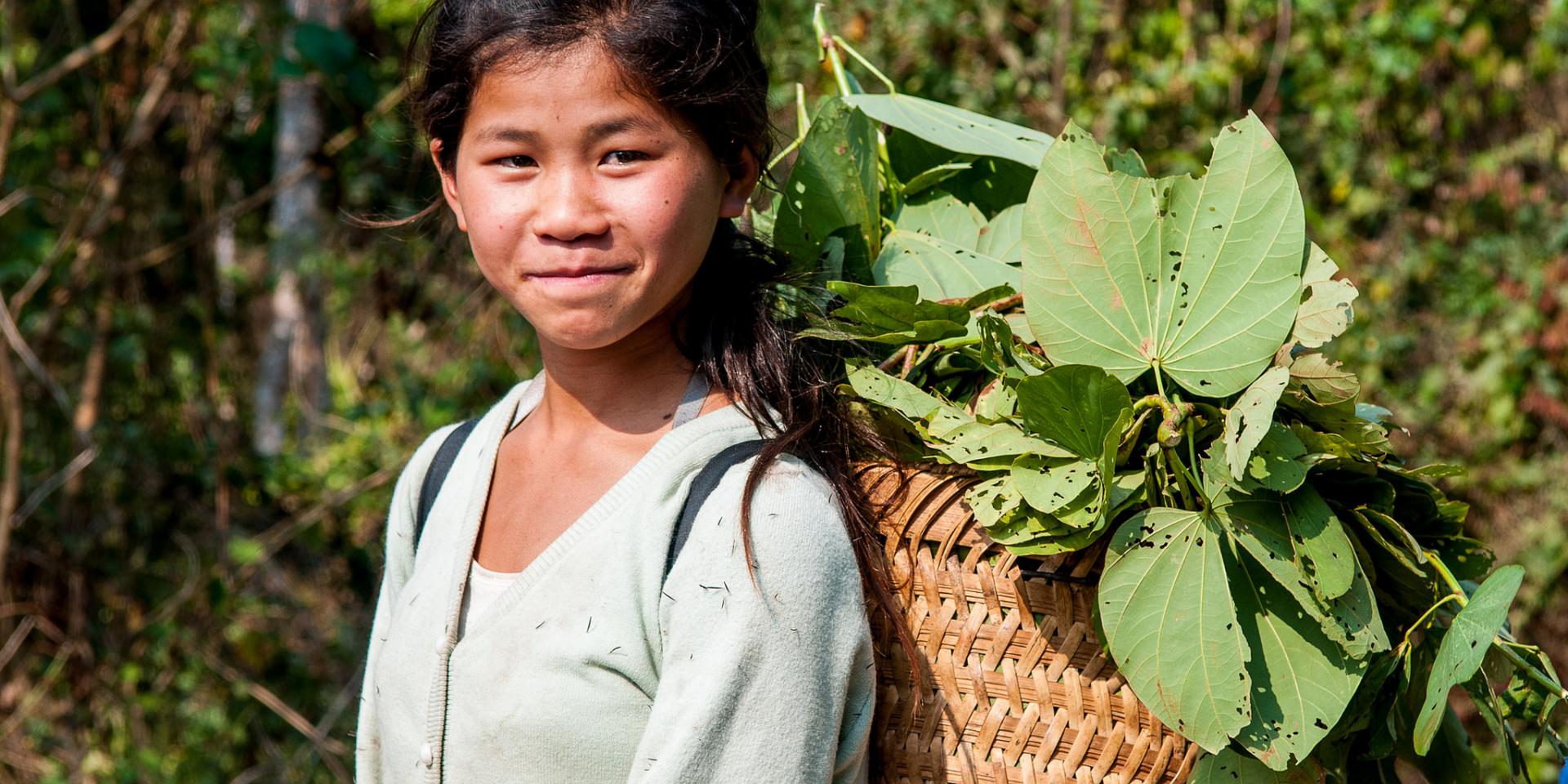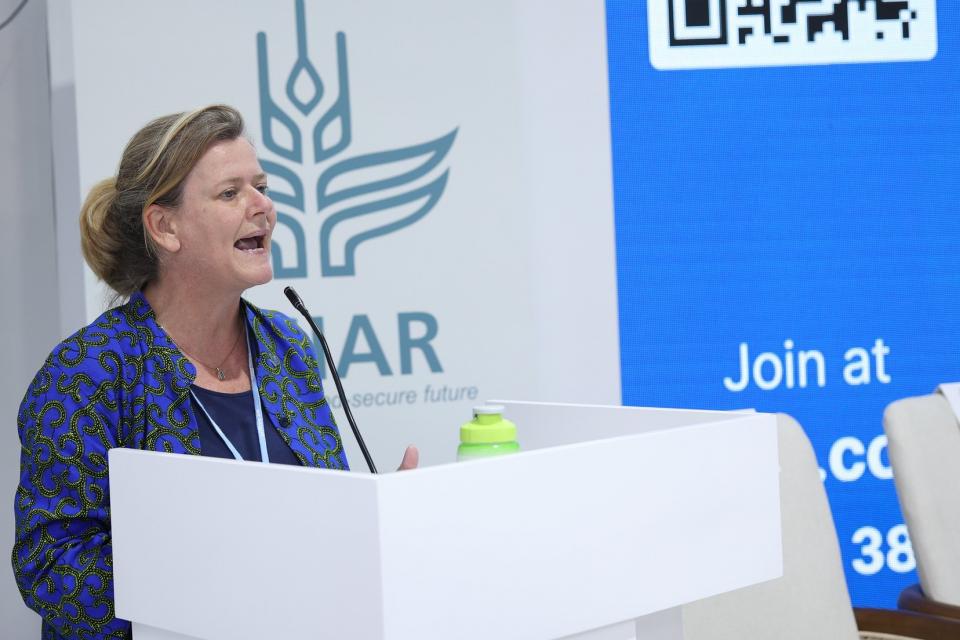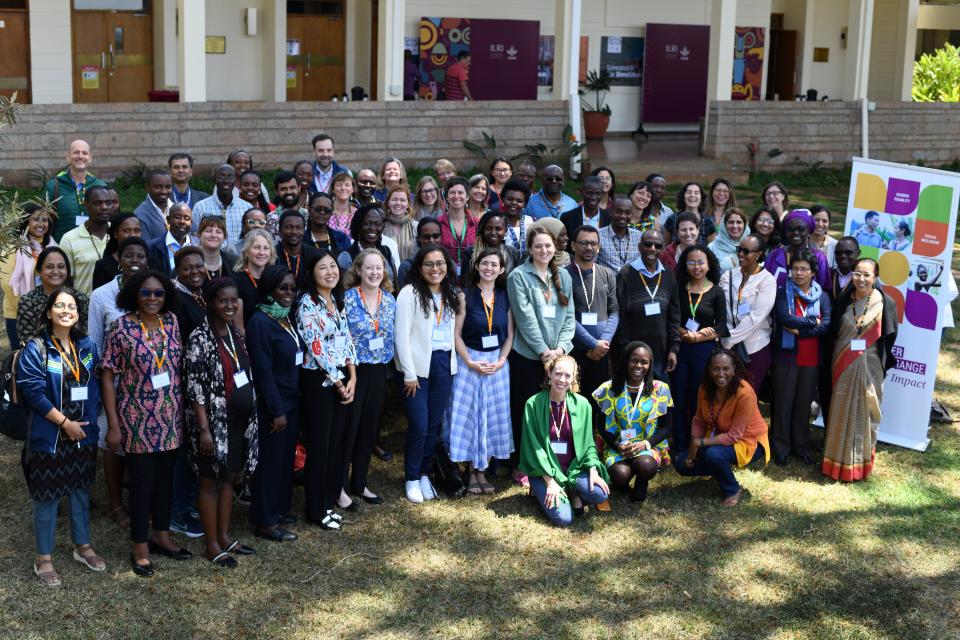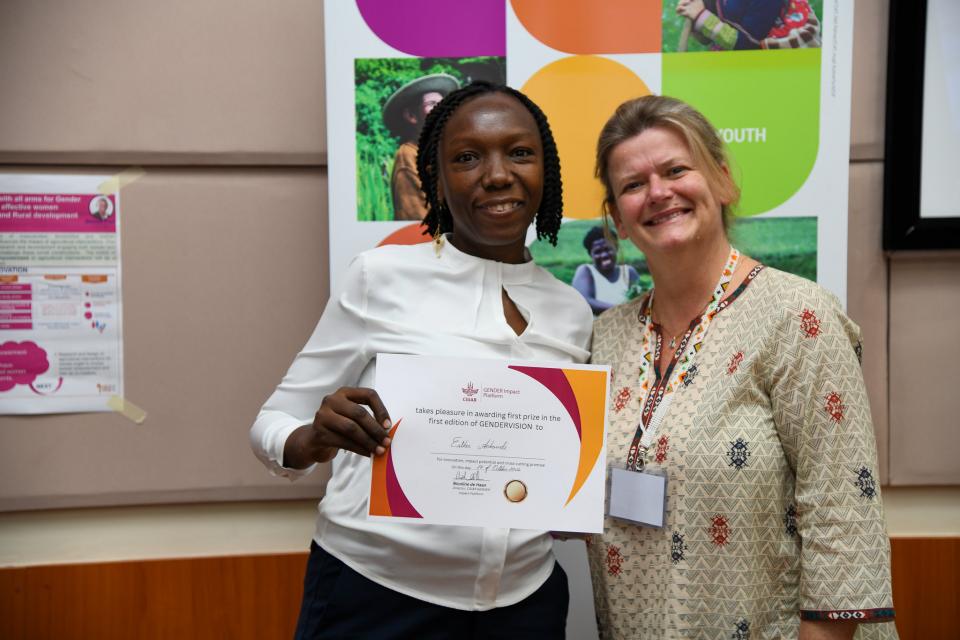Understanding youth’s lived experiences for the future of food systems
 Photo: Georgina Smith/CIAT
Photo: Georgina Smith/CIAT
“We need to understand young people more broadly and holistically for the success of agriculture, livestock farming and food systems,” remarked Renee Bullock, Senior Scientist at the International Livestock Research Institute (ILRI), during the CGIAR GENDER Science Exchange held in October in Nairobi, Kenya.
While many young people are enthusiastic about change, inequalities are making their transition from youth to adulthood more complicated, leading to increased disengagement of young people from agriculture and food systems livelihoods, CGIAR gender researchers agreed during a discussion on “Youth and migration in food systems.”
Bullock kicked off the discussion by questioning what is known about youth in food systems:
“But do we know who the youth are? What are their aspirations and experiences? Youth have gained a lot of popularity, but it’s also generating confusion because people don’t know who the youth are, how to work with them and what matters to young people,” she said. “Young people and youth studies might be the entry point to understanding youth and agriculture, rather than starting with agriculture.”
An estimated 10–12 million people in sub-Saharan Africa are entering the labor force annually and need new jobs, including in agriculture. At the same time, the future of food systems hinges on youth taking up essential roles in food production and provision. That’s why understanding how to engage youth is becoming increasingly urgent.
Perspectives on youth
The United Nations defines ‘youth’ as those persons between the ages of 15 and 24 years. However, Bullock interjected that it is difficult to define youth, which varies with circumstances, especially with changes in demographics, such as social-cultural backgrounds, region, context, financial and economic settings.
‘Youth transitions’, on the other hand, are used to describe the different key milestones that make up the transition from youth to adulthood. These milestones may include completing education, getting employment and starting a family.
The scale and consequences of youth transitions vary across countries and contexts depending on a combination of structural constraints and opportunities, societal expectations and policy frameworks as well as individual agency, Bullock stated.
Youth, Bullock continued, the period between childhood and adulthood, in most developing countries is a time during which many young people face many challenges of social exclusion, joblessness and restricted futures. This period is characterized by high rates of unemployment which hamper young people’s abilities to find work and earn income. Transitions sometimes occur rapidly in response to the breakdown of traditional family relationships as young people rush to secure work for a living at earlier ages.

Young Kenyan agricultural entrepreneurs Wangari Kuria (left) and Janette Toroitich during the GENDER Science Exchange conference (Photo: N. Ronoh)
What drives youth toward milestones
The perspectives on youth ushered the speakers to define the relationships between youth transitions and food systems.
“In Kenya, for example, livestock plays important roles in supporting a young person to achieve certain milestones. Livestock enables parents to generate income to pay school fees as well as bride prices. Besides, young men and women engage in livestock value chain activities, which hence become a source of income,” Bullock explained.
Bullock stated that there is a need to consider how gender scientists might better research and theorize about ‘youth’, understood as a socially constructed life phase, and about the empirical realities of young people’s lives from different contexts.
Many youth in Africa, for example, are migrating from rural to urban areas in search of employment.
Francois Iradukunda, a scientist at the Alliance of Bioversity and CIAT, highlighted men’s rural-to-urban migration and how it affects banana farming systems in Burundi. According to Iradukunda, youth transitions sometimes force young men to migrate to urban areas in search of better lives, resulting in many young people dropping out of school and exiting agriculture. Iradukunda quoted a male migrant in Burundi:
“‘I dropped out of school because I lacked money to pay school fees due to poverty. I then decided to go to Bujumbura, where my cousins and friends helped me to find a job.’”
Men’s migration to urban areas leads to changes in households and agricultural practices. It also changes the family structure and transforms gender roles in rural societies.
“Banana in Burundi is usually considered as a ‘male crop’. But due to men’s migration, women, and especially wives, become the primary decision-makers in families and take over management of banana plantations,” Iradukunda commented.
Iradukunda advocated for a gender-transformative approach in agriculture and food systems to transform cultural barriers for equality in food systems.
The plight of young women migrants
Muzna Alvi, a research fellow at the International Food Policy Research Institute (IFPRI), on the other hand highlighted the plight of women migrants, most of whom are young people, a vulnerable and mostly understudied group:
“Women migrants are such a vulnerable group and quite understudied because it’s often hard to reach them, especially where they are working as domestic care workers. They are living with their employers at the employer’s home, making it very hard to reach them. You must navigate within a system that is closed, often hostile, and that prevents you from finding out what is wrong or not working.”
Alvi described key elements of a Women’s Empowerment in Migration Index (WEMI) that aims to measure the multiple dimensions of agency, resources and achievements of women migrants.
“What we found to be most important in the migration context was women’s reduced mobility, preventing them from going to places like markets, visit friends and migration support centers, while in their destination country.”
Another thing, Alvi added,
“is that women have very restricted access to land and other productive assets and that affects women’s ability to return home. When you know that you don’t have access to land or assets back at home, that forces you to stay in potentially unsafe migration situations. Very few women migrants are part of women’s groups in their home or destination country.”
This despite the benefits of collective agency:
“Collective agency have been quite a critical part of a women’s empowerment measures and tools that CGIAR researchers have developed that allow measurement and monitoring of women’s agency and empowerment.”
Alvi underscored the role of men in the empowerment of women migrants.
“Men’s role in empowering women migrants is critical, beginning with negotiations within the household. When women migrate, sometimes care work is left to men.”
This necessitates men taking up their responsibility seriously.
“Often, young girls are married early when mothers migrate because men don’t want or are unable to take responsibility. Men within the community also function as agents, connecting women with recruitment agencies. Men are policy-makers and employers who employ and sponsor women migrants. At every point, men are involved, from the household to recruitment, decision and policy-making,” Alvi explained.
Key takeaways from this discussion included that stronger theoretical and practical understanding of young people’s experiences and life contexts is required, especially in relation to food systems and within the everchanging socioeconomic circumstances that have important implications for young people. Besides, advocating for a gender-transformative approach will help address cultural barriers and norms that drive gender inequalities in agriculture, putting us one step closer to a stable food system in future.


